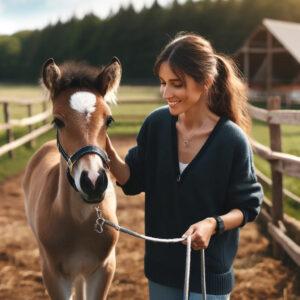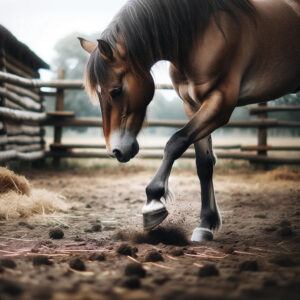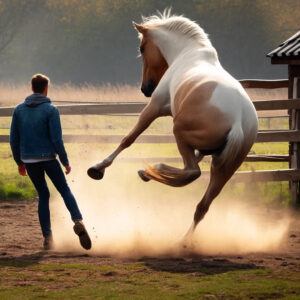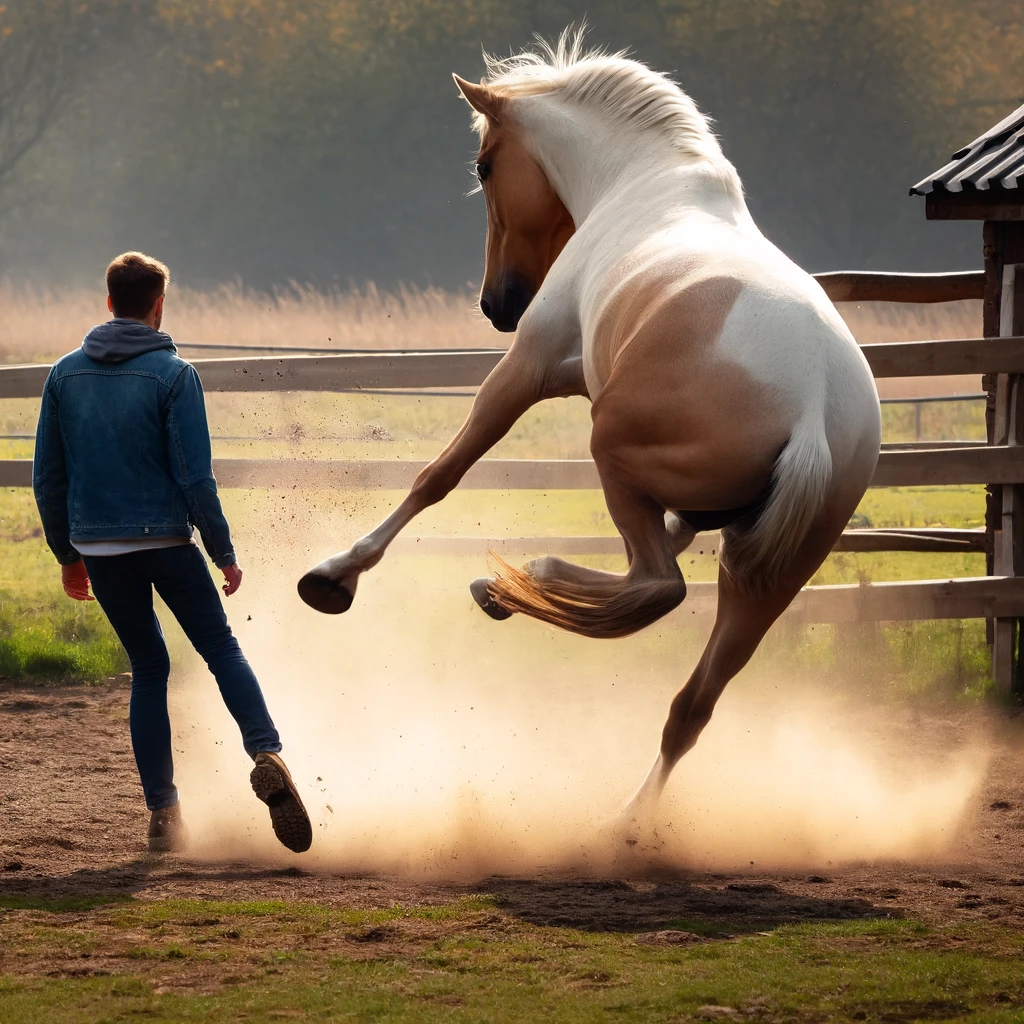
As I wrote in yesterday’s post, we would be looking at all the different areas of horsemanship so you can not only get to know your horse better but to form a better bond and long-term relationship with your companion.
The foundation of successful horse training lies in understanding your horse’s behavior and body language. Horses communicate through subtle cues, and learning to interpret these signals is a must. By observing their ears, eyes, and posture, you can gauge their mood and intentions. Building a strong relationship based on trust and respect starts with effective communication.
Introduction to Horse Behavior
Horses are social animals with a complex system of communication. In the wild, they rely on body language to interact with other horses and respond to their environment. Understanding this language is crucial for horse owners and trainers. When you can accurately read a horse’s behavior and body language, you can respond appropriately, ensuring the horse feels safe and understood.
Key Areas to Observe
Ears
A horse’s ears are highly expressive and can provide a lot of information about its mood and focus.
- Forward Ears: When a horse’s ears are pricked forward, it indicates interest or curiosity. The horse is likely paying attention to something in its environment.
- Pinned Ears: Ears flattened back against the head signal anger or irritation. This is a warning sign that the horse might act defensively.
- Swiveling Ears: Ears that move in different directions show that the horse is attentive to multiple stimuli. It’s trying to gather as much information as possible.
- Relaxed Ears: Ears that are slightly to the side or moving gently indicate a relaxed and content horse.
Eyes

A horse’s eyes are another critical indicator of its emotional state.
- Soft Eyes: Soft, relaxed eyes often indicate a calm and content horse.
- Wide Eyes: Wide, open eyes with visible whites can signal fear or excitement. The horse might be startled or anxious.
- Blinking: Frequent blinking can show that a horse is relaxed and thinking. A lack of blinking might indicate tension or stress.
Posture
The overall posture of a horse reveals much about its comfort level and intentions.
- Relaxed Stance: A horse standing quietly with a relaxed posture and weight evenly distributed is generally calm and at ease.
- Tense Muscles: Tension in the muscles, especially in the neck and back, can indicate anxiety or readiness to react quickly.
- Raised Head: A horse with a high head carriage is usually alert or anxious, trying to get a better view of its surroundings.
- Lowered Head: A lowered head, especially if combined with relaxed ears and soft eyes, signals relaxation and trust.
Behavioral Cues
Licking and Chewing
Licking and chewing are signs that a horse is processing information and feels safe. It’s often seen after a stressful situation or a new experience. This behavior indicates that the horse is beginning to relax and understand what’s happening.
Pawing
 Pawing the ground can have several meanings depending on the context. It can be a sign of impatience, boredom, or anxiety. If a horse paws while tied or in a confined space, it’s likely expressing frustration or restlessness.
Pawing the ground can have several meanings depending on the context. It can be a sign of impatience, boredom, or anxiety. If a horse paws while tied or in a confined space, it’s likely expressing frustration or restlessness.
Tail Swishing
Tail swishing can be a response to flies or other irritants, but it can also signal annoyance or agitation. Frequent, vigorous tail swishing might indicate discomfort or displeasure.
Building a Strong Relationship
Understanding and responding to your horse’s behavior and body language is the foundation of building a strong, trusting relationship. Here are some tips to help you strengthen your bond:
Spend Time Observing
Spend time watching your horse in different situations. Observe how it interacts with other horses and responds to various stimuli. The more you observe, the better you’ll become at interpreting its signals.
Consistent Training
Consistency in training helps a horse understand what’s expected of it. Use clear, consistent cues and reward positive behavior. Horses thrive on routine and predictability.
 Positive Reinforcement
Positive Reinforcement
Rewarding desired behaviors with treats, praise, or a break can reinforce those behaviors. Positive reinforcement helps build trust and encourages a willing partnership.
Patience and Understanding
Training a horse takes time and patience. Understand that each horse is an individual with its own personality and learning pace. Be patient and adjust your training methods to suit your horse’s needs.
Common Behavioral Issues
Understanding common behavioral issues can help you address them effectively:
Spooking
Horses are prey animals and can spook easily. When a horse spooks, it’s reacting to perceived danger. To manage spooking, try to identify and desensitize your horse to potential triggers gradually.
Biting
Biting can be a sign of aggression, frustration, or even playfulness. It’s important to address biting behavior immediately to prevent it from becoming a dangerous habit. Ensure your horse has enough mental and physical stimulation to prevent boredom-related biting.
 Kicking
Kicking
Kicking is a defensive behavior. A horse might kick if it feels threatened or cornered. Always approach a horse from the side, never directly from behind, and respect its personal space.
Conclusion
Understanding your horse’s behavior and body language is essential for effective training and building a strong, trusting relationship. By observing your horse’s ears, eyes, posture, and other subtle cues, you can better interpret its mood and intentions. Remember to spend time observing, use consistent training methods, employ positive reinforcement, and be patient. Address common behavioral issues with understanding and appropriate techniques. With time and effort, you’ll develop a deeper connection with your horse, leading to a more harmonious and fulfilling partnership.

